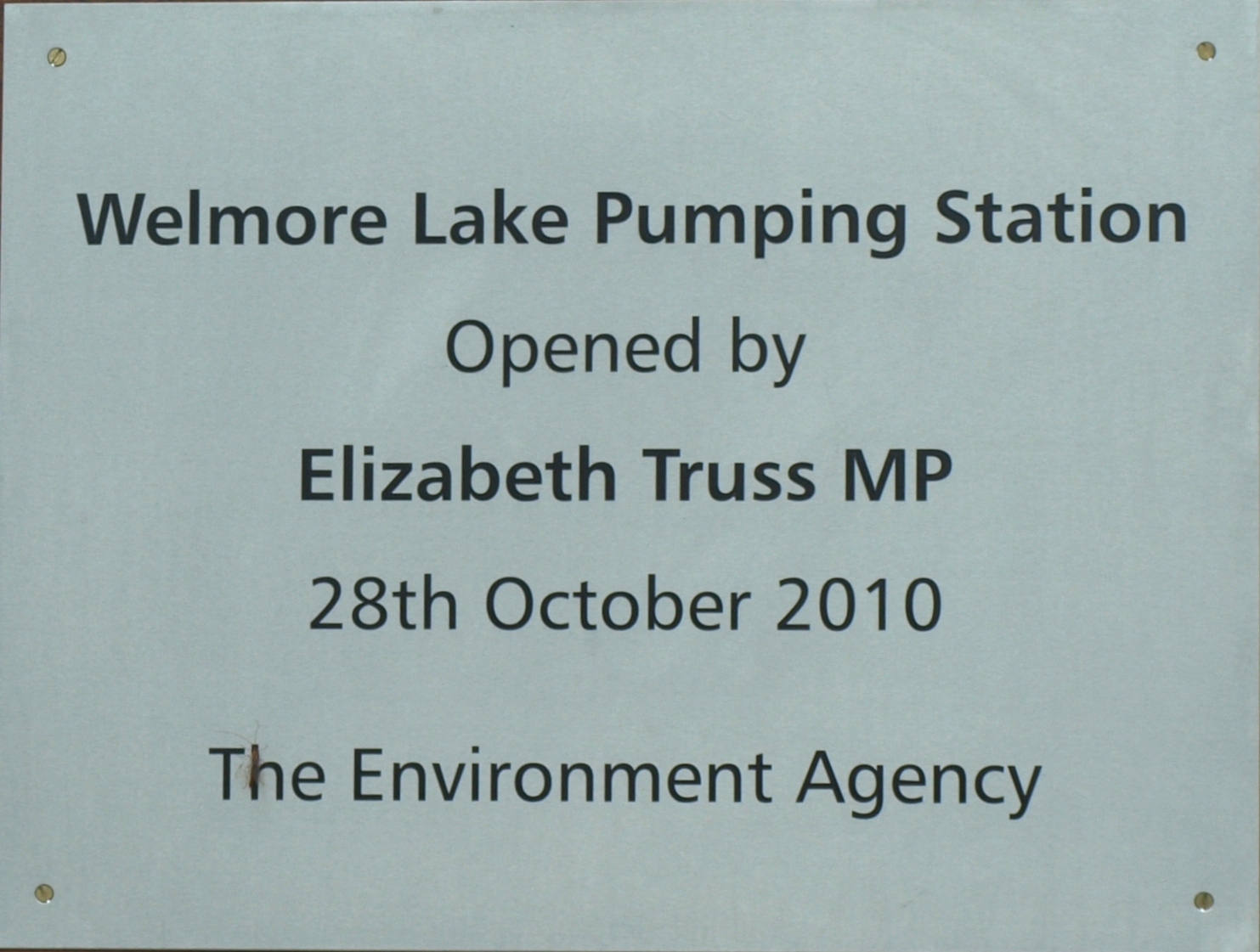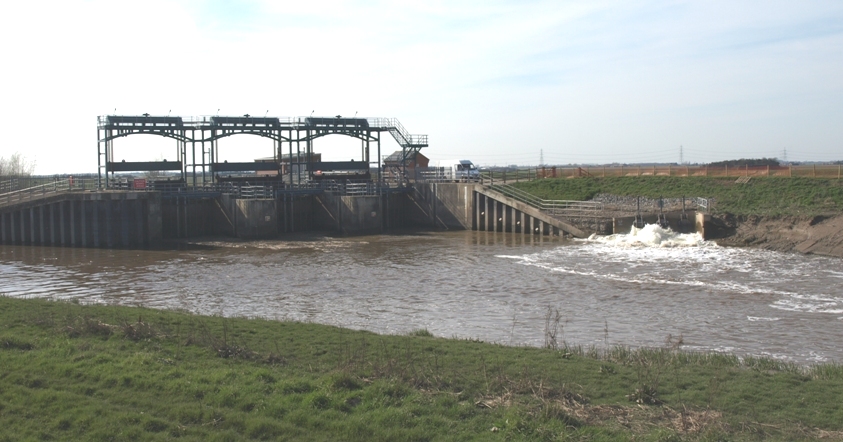
The Welney Website
Welmore Lake Sluice
new pumping station, 2010
Report first posted 26th Mar 2011, page amended/updated
Wednesday, 28 March 2012

| a report by the webmaster |

Mrs Elizabeth Truss, MP for South West Norfolk, officially opened a new electrically powered pumping station at Welmore Lake Sluice on Thursday 28th October 2010. Among those attending the ceremony were were representatives of the Regional Flood Defence Committee, RSPB, Wildfowl and Wetlands Trust, the Borough Council of Kings Lynn & West Norfolk and the Environment Agency.
The sluice is at the most northerly point of the parish of Welney, but there was no mention of the ceremony in the minutes of the meeting of Welney Parish Council in November 2010 so presumably none of our Councllors were present.

Above, the Hundred Foot River, the 3-gate sluice completed in 1999 at the northern end of the River Delph and the new pumped outfall on the right, viewed from the eastern bank of the Hundred Foot. Click photo to see a close up of the new outfall. (Photos by the Webmaster, March 2011)
| You may need to "refresh" your page to view the latest edition. |

(The overall operation of the Ouse Washes floodwater scheme can be seen in an Environment Agency diagramatic map - its a large file and it will open in a separate window)
The current sluice was completed in 1999 replacing the 1933 two-gate one 70 metres to the south. A pumping facility was included to completely drain the washes each spring to enable inspection and maintenance of the banks, provide grazing (a lucrative venture for the EA) and breeding gounds for birds. However, the capacity often proved insufficient and portable diesel pumps had to be brought in to assist.

|
Acknowledgements. text and photos © Peter Cox March 2011. If you think this report is incorrect, incomplete or unfair, please e-mail the webmaster, and your response will be added. |
Work on the £1.8 million project started in 2009 and included construction of new intake and outfall structures and the instalation of three new electric powered pumps (one of which is a standby/reserve pump) each capable of discharging 1.5 cubic metres per second. The annual volume of water needing to be pumped off each year is said to be 5 million cubic metres.
There also appears to have been some re-sculpturing of the river bank next to the new outfall.
As the pumps are only to dry the washes during spring, this new work will not alleviate the winter flooding of the A1101 Wash Road at Welney nor speed-up clearance of flood water from it.
In the Great Ouse Tidal River Strategy Review published in 2009 the EA said they had considered pumping water out in winter when the sluice cannot be opened but it was ruled out – but added it may become necessary in the future to counteract sea level rise.
| Related pages on this website |
| Fens, Rivers, Washes: introduction |
| The sluices at Welmore Lake. |
| Related pages on external websites |
| The Ouse Washes |